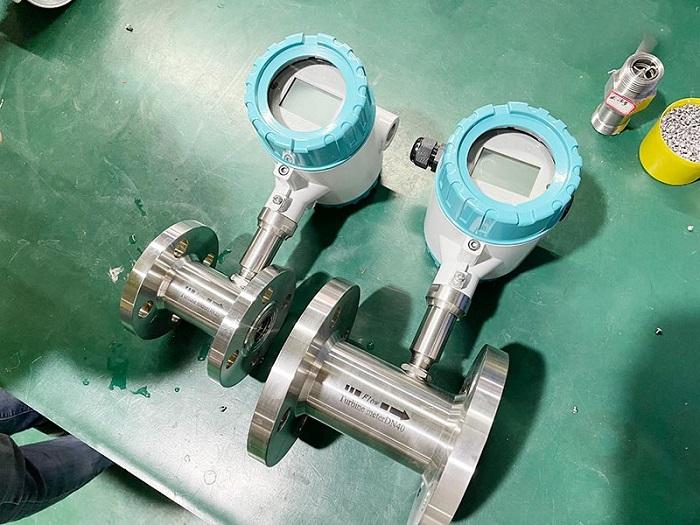How Is a Turbine Flow Meter Different from a Positive Displacement Meter?

Flow measurement is critical in many industrial and laboratory applications. Accurately measuring liquids and gases ensures efficient operations, safety, and process optimization. Among the most commonly used devices are Turbine Flow Meters and positive displacement meters. Both provide reliable measurements, but they operate on fundamentally different principles. Understanding their differences is essential for selecting the right instrument for a specific application.
Overview of Turbine Flow Meters
Principle of Operation
A Turbine Flow Meter measures the flow rate of a fluid by detecting the rotational speed of a turbine placed in the flow path. The fluid pushes the turbine blades, causing rotation. Sensors detect the turbine’s speed and convert it into a volumetric flow rate.
The meter’s accuracy depends on the uniformity of flow, fluid viscosity, and the condition of the turbine blades. Turbine meters are highly suitable for clean, low-viscosity fluids such as water, petroleum products, and light chemicals.
Key Advantages
Turbine meters offer rapid response and high accuracy under steady flow conditions. They can handle a wide range of flow rates and provide electronic output compatible with modern process control systems. They are also compact, making installation in pipelines relatively simple.
Common Applications
Industries that rely on Turbine Flow Meters include oil and gas, chemical processing, and water management. They are particularly effective for custody transfer of petroleum products, where precision and repeatability are critical.
Overview of Positive Displacement Meters
Principle of Operation
Positive displacement (PD) meters measure flow by capturing a fixed volume of fluid and counting the number of times this volume is filled and emptied. Common types include rotary vane, gear, and piston meters.
The mechanical motion of the meter corresponds directly to the volume of fluid passing through. This makes PD meters inherently accurate regardless of fluid viscosity, density, or flow profile.
Key Advantages
PD meters excel in measuring viscous fluids such as oils, syrups, and chemicals. They provide high accuracy at low flow rates and do not require flow conditioning. Because they measure volume directly, calibration is straightforward and reliable.
Common Applications
Industries that use PD meters include petroleum, food and beverage, pharmaceuticals, and chemical manufacturing. They are ideal for custody transfer and metering applications where fluid viscosity is high and flow may be variable.
Main Differences Between Turbine and Positive Displacement Meters
Measurement Principle
The primary difference is in measurement principle. Turbine Flow Meters rely on the velocity of the fluid to rotate the turbine, translating speed into flow rate. Positive displacement meters directly measure the volume by mechanically trapping and counting fluid units.
Velocity-based measurement in turbine meters makes them sensitive to fluid properties and flow profile. PD meters are volume-based and largely unaffected by these factors.
Fluid Type Compatibility
Turbine meters perform best with clean, low-viscosity fluids. Contaminants, bubbles, or high viscosity can affect turbine rotation and accuracy. Positive displacement meters handle a broader range of fluids, including thick, sticky, or slurry-like substances.
This distinction makes PD meters versatile in applications where fluid quality or viscosity may vary. Turbine meters require careful fluid selection to maintain accuracy.
Accuracy and Flow Conditions
Turbine Flow Meters are highly accurate in steady, laminar flow conditions. However, their performance decreases in turbulent, pulsating, or aerated flows. Positive displacement meters maintain accuracy across a wide range of flow conditions, including low flow and intermittent pulses.
The ability of PD meters to measure flow without flow conditioning provides a significant advantage in complex pipeline systems or when the flow profile is unpredictable.
Maintenance and Durability
Turbine meters have moving parts that require periodic maintenance, including cleaning and lubrication. Impurities in the fluid can damage turbine blades, reducing lifespan. PD meters also have moving parts but are generally more robust against viscous fluids and contaminants.
Both meters require calibration, but PD meters often need less frequent adjustments because their volumetric measurement is less affected by flow variations.
Output and Integration
Turbine meters typically provide electronic pulses, which can be integrated with control systems for continuous monitoring. PD meters may also provide electronic output, but many models offer direct mechanical readouts suitable for batch processing or manual monitoring.
Electronic integration in turbine meters supports real-time data analysis and remote monitoring, while PD meters excel in applications where direct volume measurement is preferred.
Choosing Between Turbine and Positive Displacement Meters
Consider Flow Characteristics
When choosing between a Turbine Flow Meter and a PD meter, flow characteristics are key. Clean, steady flows at moderate to high velocity are ideal for turbine meters. High-viscosity, pulsating, or contaminated fluids are better suited for positive displacement meters.
Application Requirements
Accuracy, maintenance, and integration requirements influence meter selection. For automated systems requiring real-time data, turbine meters may be preferred. For batch processing or high-viscosity fluids, PD meters provide reliability and consistency.
Cost and Installation
Turbine meters are generally less expensive upfront and easier to install in straight pipelines. PD meters may have higher initial costs but offer long-term accuracy and reliability with viscous fluids, which can offset maintenance and replacement expenses.
Conclusion
While both Turbine Flow Meters and positive displacement meters measure flow, they operate on different principles and serve different applications. Turbine meters rely on fluid velocity, offering rapid response and integration capabilities in clean, steady flows. Positive displacement meters measure volume directly, providing high accuracy in viscous or variable fluids.
Understanding these differences allows engineers and operators to select the most suitable meter for their specific system requirements. Proper selection ensures accurate measurement, operational efficiency, and long-term reliability in industrial and laboratory applications.
Both meters remain essential tools in modern flow measurement, and knowing their unique strengths ensures that fluid systems are monitored accurately and effectively.
- Art
- Causes
- Crafts
- Dance
- Drinks
- Film
- Fitness
- Food
- Παιχνίδια
- Gardening
- Health
- Κεντρική Σελίδα
- Literature
- Music
- Networking
- άλλο
- Party
- Religion
- Shopping
- Sports
- Theater
- Wellness



